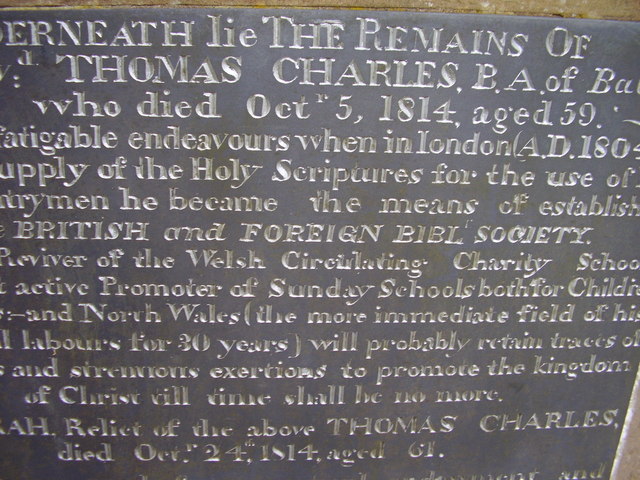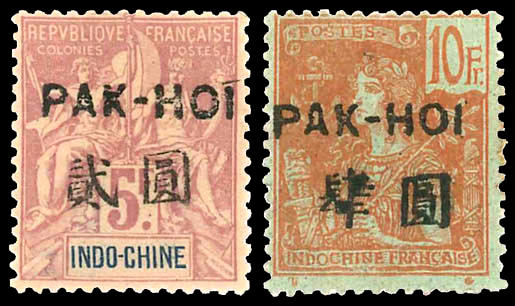|
Standard Romanization (Cantonese)
Standard Romanization is a romanization system for Standard Cantonese, Cantonese developed by Christian missionaries in South China in 1888, particularly relying upon the work of John Chalmers (missionary), John Morrison Chalmers. By 1914, it had become well established in Canton and Hong Kong (there being no other system of significance in published literature) and publications using it having been issued by the British and Foreign Bible Society, the China Baptist Publication Society,for example, and the Pakhoi Mission Press from as early as 1906. It is the foundation of the current system of Hong Kong Government Cantonese Romanisation, Romanisation used by the Hong Kong Government. Initials Finals * The finals ''m'' and ''ng'' can only be used as standalone nasal stop, nasal syllables. *When ''h'' or ''k'' is an initial, ''om'' and ''op'' are used as the final, instead of ''am'' and ''ap''. *When ''s'', ''ts'' or ''ts’'' is the initial, and ''i'' is the final, the final ... [...More Info...] [...Related Items...] OR: [Wikipedia] [Google] [Baidu] |
Romanization
Romanization or romanisation, in linguistics, is the conversion of text from a different writing system to the Roman (Latin) script, or a system for doing so. Methods of romanization include transliteration, for representing written text, and transcription, for representing the spoken word, and combinations of both. Transcription methods can be subdivided into ''phonemic transcription'', which records the phonemes or units of semantic meaning in speech, and more strict ''phonetic transcription'', which records speech sounds with precision. Methods There are many consistent or standardized romanization systems. They can be classified by their characteristics. A particular system’s characteristics may make it better-suited for various, sometimes contradictory applications, including document retrieval, linguistic analysis, easy readability, faithful representation of pronunciation. * Source, or donor language – A system may be tailored to romanize text from a particular lan ... [...More Info...] [...Related Items...] OR: [Wikipedia] [Google] [Baidu] |
Standard Cantonese
Cantonese ( zh, t=廣東話, s=广东话, first=t, cy=Gwóngdūng wá) is a language within the Chinese (Sinitic) branch of the Sino-Tibetan languages originating from the city of Guangzhou (historically known as Canton) and its surrounding area in Southeastern China. It is the traditional prestige variety of the Yue Chinese dialect group, which has over 80 million native speakers. While the term ''Cantonese'' specifically refers to the prestige variety, it is often used to refer to the entire Yue subgroup of Chinese, including related but largely mutually unintelligible languages and dialects such as Taishanese. Cantonese is viewed as a vital and inseparable part of the cultural identity for its native speakers across large swaths of Southeastern China, Hong Kong and Macau, as well as in overseas communities. In mainland China, it is the ''lingua franca'' of the province of Guangdong (being the majority language of the Pearl River Delta) and neighbouring areas such as Guangx ... [...More Info...] [...Related Items...] OR: [Wikipedia] [Google] [Baidu] |
John Chalmers (missionary)
John Chalmers (1825–1899) was a Scottish Protestant missionary in China and translator. Chalmers served with the London Missionary Society and during the late Qing Dynasty China. He wrote several works on the Chinese language, including, in 1866, the first translation into English of Lao Tzu's Tao Te Ching (which he called the Tau Teh King). Works * * * * * References * * Notes External links * 1825 births 1899 deaths Scottish translators Protestant missionaries in China Protestant writers 19th-century British translators Scottish Protestant missionaries British expatriates in China Missionary linguists {{Christianity-bio-stub ... [...More Info...] [...Related Items...] OR: [Wikipedia] [Google] [Baidu] |
British And Foreign Bible Society
The British and Foreign Bible Society, often known in England and Wales as simply the Bible Society, is a non-denominational Christian Bible society with charity status whose purpose is to make the Bible available throughout the world. The Society was formed on 7 March 1804 by a group of people including William Wilberforce and Thomas Charles to encourage the "wider circulation and use" of the Scriptures. History The British and Foreign Bible Society dates back to 1804 when a group of Christians, associated with the Religious Tract Society, sought to address the problem of a lack of affordable Bibles in Welsh for Welsh-speaking Christians. Many young girls had walked long distances to Thomas Charles to get copies of the Bible. Later the story was told of one of them – a young girl called Mary Jones who walked over 20 miles to get a Bible in Bala, Gwynedd. BFBS was not the first Bible Society in the world. The first organisation in Britain to be called "The Bible Society ... [...More Info...] [...Related Items...] OR: [Wikipedia] [Google] [Baidu] |
China Baptist Publication Society
China, officially the People's Republic of China (PRC), is a country in East Asia. It is the world's most populous country, with a population exceeding 1.4 billion, slightly ahead of India. China spans the equivalent of five time zones and borders fourteen countries by land, the most of any country in the world, tied with Russia. Covering an area of approximately , it is the world's third largest country by total land area. The country consists of 22 provinces, five autonomous regions, four municipalities, and two Special Administrative Regions (Hong Kong and Macau). The national capital is Beijing, and the most populous city and financial center is Shanghai. Modern Chinese trace their origins to a cradle of civilization in the fertile basin of the Yellow River in the North China Plain. The semi-legendary Xia dynasty in the 21st century BCE and the well-attested Shang and Zhou dynasties developed a bureaucratic political system to serve hereditary monarchies, or dynast ... [...More Info...] [...Related Items...] OR: [Wikipedia] [Google] [Baidu] |
Pakhoi Mission Press
Beihai (; Postal romanization: Pakhoi) is a prefecture-level city in the south of Guangxi, People's Republic of China. Its status as a seaport on the north shore of the Gulf of Tonkin has granted it historical importance as a port of international trade for Guangxi, Hunan, Hubei, Sichuan, Guizhou, and Yunnan. Between the years 2006 and 2020, Beihai is predicted to be the world's fastest growing city. Beihai has a large shipyard, but most of the money generated in the city is derived from trade. In addition, it governs the small islands of Weizhou and Xieyang, and is directly west of Leizhou Peninsula. Subdivisions Beihai contains three districts and one county, which are subdivided into five urban sub-districts, 23 towns, 3 townships, 87 neighborhood committees, 343 village committees. (see also Administrative divisions of the People's Republic of China#Levels) * Haicheng District () * Yinhai District () * Tieshangang District () * Hepu County () History After the 187 ... [...More Info...] [...Related Items...] OR: [Wikipedia] [Google] [Baidu] |
Hong Kong Government Cantonese Romanisation
The Hong Kong Government uses an unpublished system of Romanisation of Cantonese for public purposes which is based on the 1888 standard described by Roy T Cowles in 1914 as Standard Romanisation. The primary need for Romanisation of Cantonese by the Hong Kong Government is in the assigning of names to new streets and places. It has not formally or publicly disclosed its method for determining the appropriate Romanisation in any given instance. Method Currently, government departments, particularly the Survey and Mapping Office of the Lands Department, consult the Chinese Language Department of the Civil Service Bureau before gazetting names and the latter vet proposed names using the ''Three Way Chinese Commercial/Telegraphic Code Book'', originally published by the Royal Hong Kong Police Force Special Branch for internal government use in 1971. The code book system is devoid of any tone indications and, being grossly simplified, is susceptible to confusion. Although the c ... [...More Info...] [...Related Items...] OR: [Wikipedia] [Google] [Baidu] |
Nasal Stop
In phonetics, a nasal, also called a nasal occlusive or nasal stop in contrast with an oral stop or nasalized consonant, is an occlusive consonant produced with a lowered velum, allowing air to escape freely through the nose. The vast majority of consonants are oral consonants. Examples of nasals in English are , and , in words such as ''nose'', ''bring'' and ''mouth''. Nasal occlusives are nearly universal in human languages. There are also other kinds of nasal consonants in some languages. Definition Nearly all nasal consonants are nasal occlusives, in which air escapes through the nose but not through the mouth, as it is blocked (occluded) by the lips or tongue. The oral cavity still acts as a resonance chamber for the sound. Rarely, non-occlusive consonants may be nasalized. Most nasals are voiced, and in fact, the nasal sounds and are among the most common sounds cross-linguistically. Voiceless nasals occur in a few languages such as Burmese, Welsh, Icelandic and ... [...More Info...] [...Related Items...] OR: [Wikipedia] [Google] [Baidu] |
Chinese (Traditional)
Traditional Chinese characters are one type of standard Chinese character sets of the contemporary written Chinese. The traditional characters had taken shapes since the clerical change and mostly remained in the same structure they took at the introduction of the regular script in the 2nd century. Over the following centuries, traditional characters were regarded as the standard form of printed Chinese characters or literary Chinese throughout the Sinosphere until the middle of the 20th century, before different script reforms initiated by countries using Chinese characters as a writing system. Traditional Chinese characters remain in common use in Taiwan, Hong Kong and Macau, as well as in most overseas Chinese communities outside Southeast Asia; in addition, Hanja in Korean language remains virtually identical to traditional characters, which is still used to a certain extent in South Korea, despite differing standards used among these countries over some variant Chines ... [...More Info...] [...Related Items...] OR: [Wikipedia] [Google] [Baidu] |
Chinese (Simplified)
Simplified Chinese characters are standardized Chinese characters used in mainland China, Malaysia and Singapore, as prescribed by the ''Table of General Standard Chinese Characters''. Along with traditional Chinese characters, they are one of the two standard character sets of the contemporary Chinese written language. The government of the People's Republic of China in mainland China has promoted them for use in printing since the 1950s and 1960s to encourage literacy. They are officially used in the People's Republic of China, Malaysia and Singapore, while traditional Chinese characters still remain in common use in Hong Kong, Macau, ROC/Taiwan and Japan to a certain extent. Simplified Chinese characters may be referred to by their official name above or colloquially . In its broadest sense, the latter term refers to all characters that have undergone simplifications of character "structure" or "body", some of which have existed for millennia mainly in handwriting alongsid ... [...More Info...] [...Related Items...] OR: [Wikipedia] [Google] [Baidu] |



